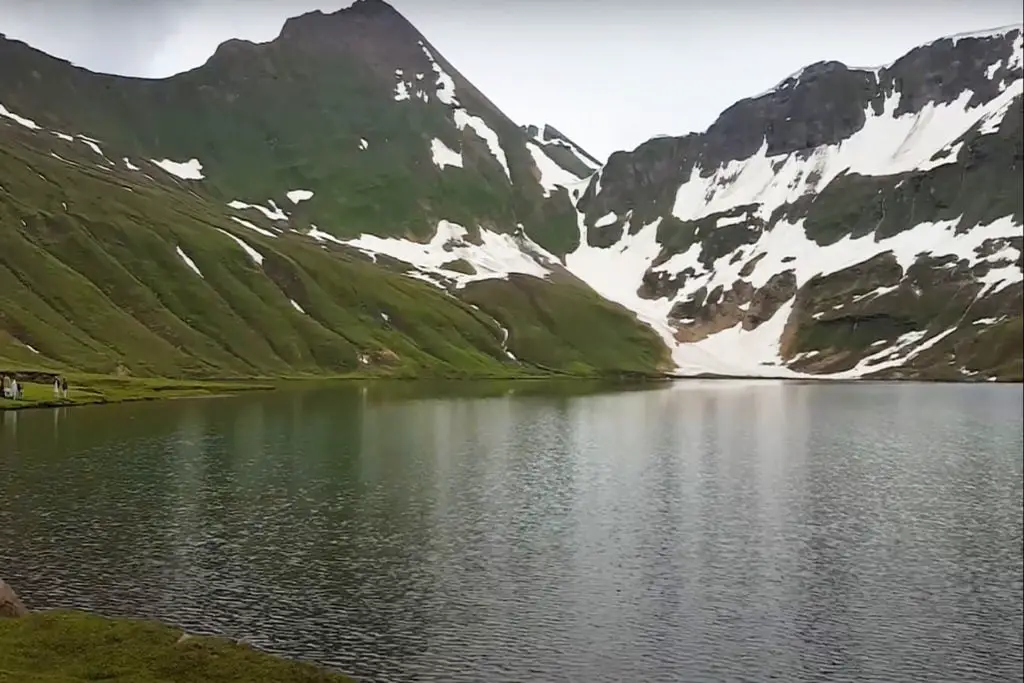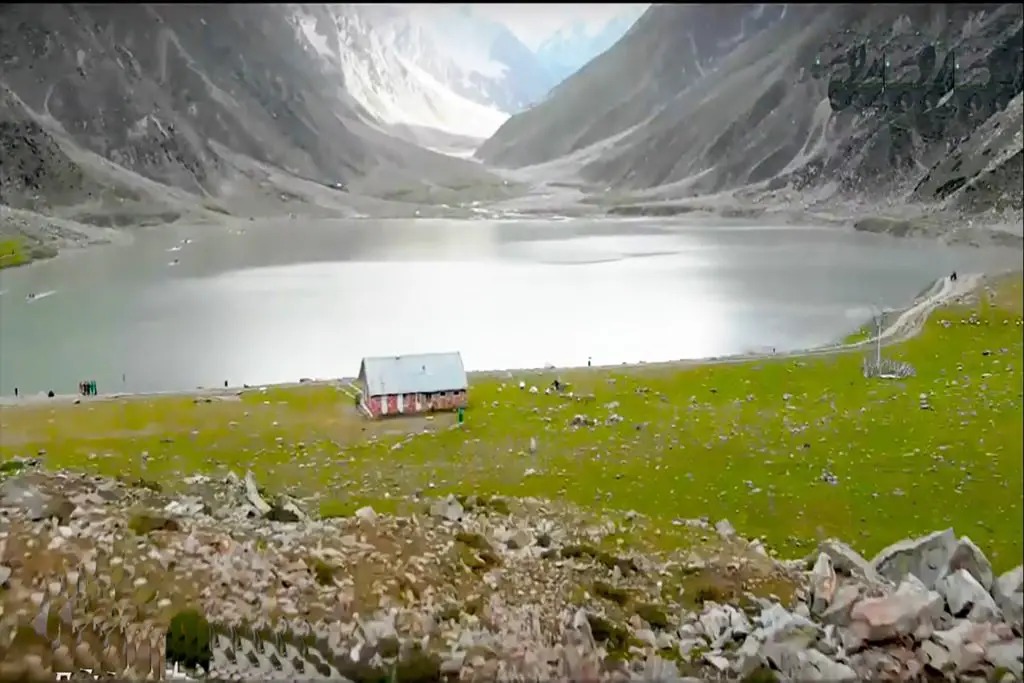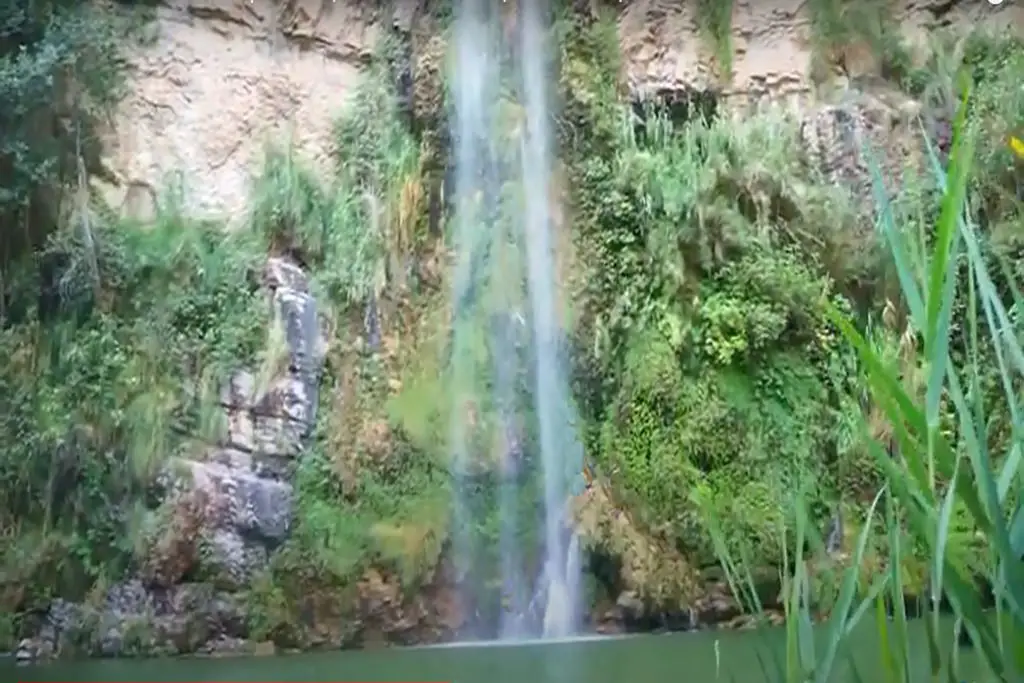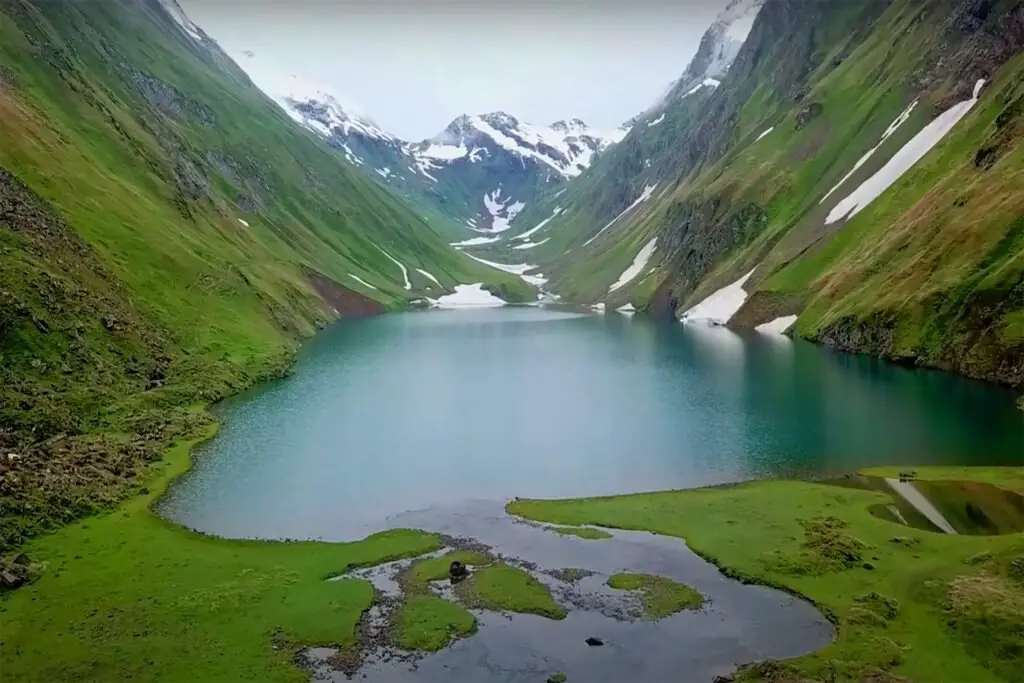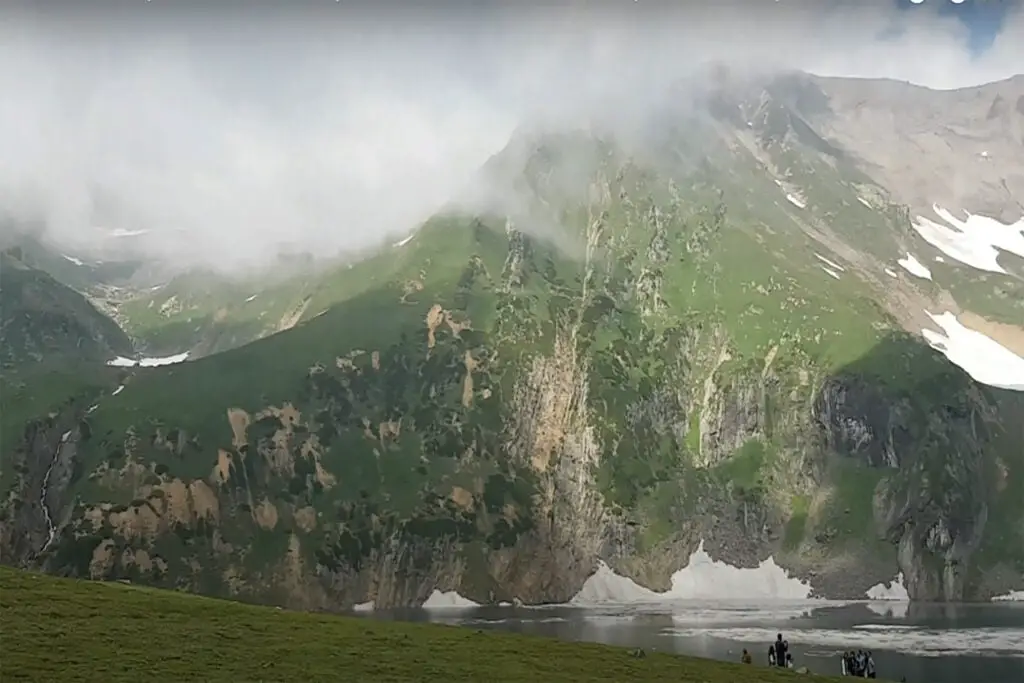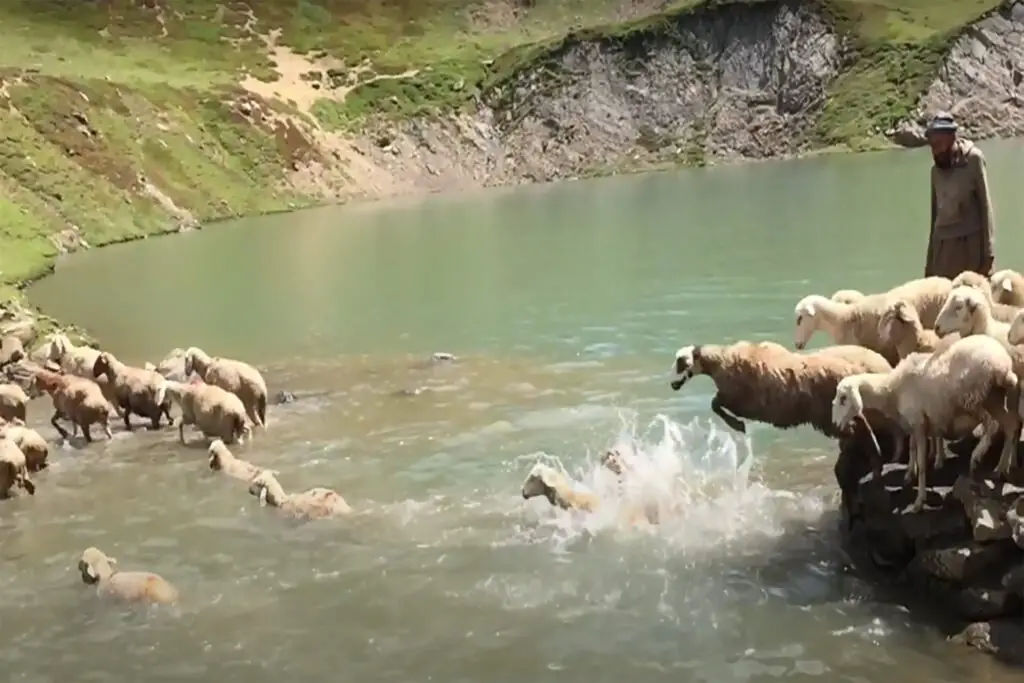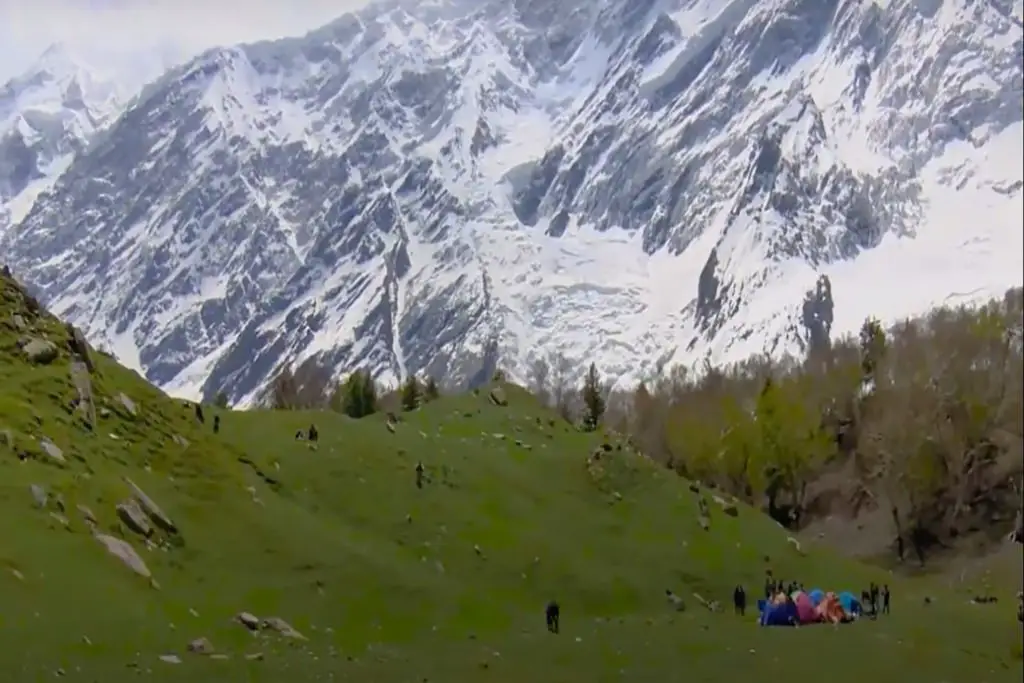Dudipatsar Lake also known as Dudipat Lake, is a lake surrounded by snow-capped peaks in the Lulusar-Dudipatsar Lake National Park. The lake lies at the northern end of the Kaghan Valley in the Mansehra District of Khyber Pakhtunkhwa Province in northern Pakistan.
Height of Dudiptsar Lake
Dudipatsar lake at an altitude of 3,800 meters (12,500 ft) displays a greenish-blue tint and maintains a notably cold temperature. It sits amidst mountains averaging about 4,800 meters (15,700 ft) high, featuring snow patches in the shaded valleys. These mountains belong to the western Himalayan alpine shrub and meadow ecoregion.
Lulusar Lake, located within the same park, serves as the primary source of the Kunhar River. Saiful Muluk National Park is adjacent to Lake Saif ul Maluk, situated in the 150 kilometers (93 mi) long Kaghan Valley. Together, these parks cover an expanse of 88,000 hectares (220,000 acres).
Wildlife of Dudipatsar National Park
Dudipat lake and its wetland habitat are of significant ecological importance to local fauna and migratory waterfowl. Fauna of the park include snow leopard, black bear, marmot, weasel, lynx, leopard, Himalayan snowdrop and snow partridge.
Access to Dudipatsar Lake, Kaghan
The 2005 Kashmir earthquake significantly impeded access to northern Pakistan. Despite this, from 2006 onward, the Pakistani government has actively worked on revitalizing tourism in the Kaghan Valley. Their efforts include extensive redevelopment and the establishment of new tourism facilities and infrastructure.
Accessibility along the road remains limited, even for cars and jeeps. Starting from Besal Valley, visitors must trek for approximately 6-8 hours across expansive alpine meadows to reach the lake. The initial four-hour trek poses the most challenging segment of the journey. The optimal time to visit spans from July to September. The trek involves occasional steep ascents and traverses through vast flat valleys, offering a plethora of stunning vistas and breathtaking scenes along the way.
Trek to Dudipatsar Lake National Park, Kahgan
Trek to dudipatsar lake national park starts in Besal, where the driver’s hotel and police checkpoint can be found. Cottages are available along with areas for setting up camps. Parking the vehicle is your own responsibility, however, someone can be hired to look after the vehicles for a day or two.
Flocks of herds and residents of Mullah ki Basti flock in September to prepare for winter. If you plan to head to Dudipatsar Lake during this time, you should bring enough food and tents as there is no accommodation available for 9-10 km.
The Dudipatsar trail is approximately 18 km long and runs along a tributary of the Kunhar river called Poorbi Narr. The trail is moderately difficult as the overall elevation gain of the trail is not high as climbing at high altitudes makes the trail challenging.
The average time for the hike is around 5-8 hours; however, there are three ways to take the trail:
1. One day trek (ideal for intermediate to experienced hikers)
This trek will not require overnight accommodation. The ascent to the lake can take 3-5 hours while the descent down would take 3-4 hours.
2. Two-day trek (for beginners to intermediate hikers)
This trek requires an overnight stay either at Mulla ki Basti which is 2 km from Dudipatsar or at the lake itself. The ascent to the lake can take up to 6-10 hours, depending on the tourist’s performance. The return is generally faster and takes around 5-6 hours. There are mules in Besal who can hire tourists’ luggage.
3. Three-day trek
A two-night stay will be required at Mulla ki Basti or Dudipatsar Lake. This is perfect for those who want to take a day trip around the lake and want to spend some quiet time here. Guides are available in Besal to hire for the Dudipatsar trek.
The nature and climate of Lake Dudipatsar National Park
The water of the lake is blue-green, which can change to turquoise depending on the time of day and time of year. It is surrounded by snow-capped mountains and fields of peach and pink flowers.
The path to the lake, which lies entirely in the national park, is breathtaking. One is likely to encounter boulders, meadows, plateaus, snow (in early summer), and streams. Cattle herders and shepherds built their summer residences on the trail and in the surrounding mountains.
The tourist season falls in mid-summer, which is mostly dry and sunny. Although during the rainy season the plateau is swampy in places and tourists are likely to see snow in the ravine that runs down from it.
Lulusar Dudipatsar National Park has a rich fauna with snow leopards, black bears, marmots, weasels, lynx, Himalayan snowdrop, snow partridge and various species of birds. There are several river crossings on the trail for locals and tourists alike. The drive to Dudipatsar Lake is an experience in itself and the final destination is spectacular!
How do I reach Dudipatsar Lake?
Dudipatsar Lake can be reached after 7-8 hours of trekking from Besal (Kaghan Valley). It is located in Lulusar Dudipatsar Lake National Park (another famous lake in this national park is Lulusar Lake). The lake has an elevation of 12,500 feet and has an average depth of 16 feet (5 m).
In a mountain range surrounded by snow-capped peaks that shimmer in the deepest shades of blue-green and represent clouds in their stillness, lies Dudipat Lake, also known as Dudipat Lake, Khyber Pakhtunkhwa, at the northern end of the Kaghan Valley in Mansehra District.
The lake’s water displays a captivating green-blue hue and maintains a strikingly cold temperature. Dudipatsar Lake is situated close to Lulusar Lake, a significant contributor to the Kunhar River. Further in the distance from Dudipatsar lies the Babusar Pass, marking the termination point of the 150 km long Kaghan Valley.
Although privately owned, the entire area has been designated as a national park by the Pakistani government.
At an altitude of 3,800 meters, Dudipatsar Sar stands encircled by verdant hills averaging around 4,800 meters, featuring snow patches in shaded crevices. This lake receives relatively few visitors, preserving its natural beauty in pristine condition. The accessibility to this area became challenging after the 8th of October 2005 earthquake in northern Pakistan.

